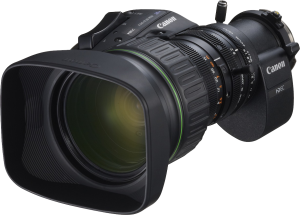
There are three methods of setting focus depending on which of the 3 types of lenses you are using. For a video style camera with a zoom lens you use…
The Parafocal Method
All video cameras with fixed zoom lenses have Parafocal lenses. These lenses are designed with extra lens elements to ensure that the lens holds focus throughout it’s zoom range from telephoto to wide angle.
The set focus on a Parafocal lens, first zoom all the way into to it’s full telephoto setting. This reduces the depth of field of the lens to a minimum, making focus most critical. Now adjust the focus ring of the lens to place your subject in focus. As you zoom back depth of field will increase and more and more of the shot will appear to be in focus.
This method fails with the next type of lens…
The Varifocal Method
Varifocal lenses are typically found on DSLR cameras. As these lenses are primarily designed for still work the zoom range is not intended to be used while live shooting, thus the lens designer can make a lighter and cheaper lens by leaving out the extra lens elements of a Parafocal lens.
The trade-off is that the Varifocal lens will not stay in perfect focus throughout it’s zoom range. To focus these lenses, let the DSLR camera’s electronics do the dirty work. First frame your shot by zooming, then hold down the shutter button part-way and let the camera auto focus, then release and start video recording.
Note: Some lenses for DSLR cameras exhibit performance much close to a true Parafocal lens and can be used as such. See discussions such is THIS for more information.
Finally we come to the type of lens for which neither of the above methods will work, the fixed-zoom Prime lens found in higher-end cinematography setups…
The Prime Lens Method
These lenses have a fixed zoom and their only controls are focus and iris. They are focused the old fashion way, with a tape measure. (Yes, THAT old fashioned.) Measure from the camera’s film-plane-marker (or the approximate position of the sensor in the camera body) to the tip of your subjects nose. Record that distance (usually in meters) and set your lens focus ring to the same value.